Auschwitz I – Main Camp
About sixty kilometers west of Krakow lies Oswiecim, a city better known by its German name, Auschwitz. Auschwitz is located in the historical landscape of Oberschlesien, which until 1919 belonged to the German empire. After the First World War, Oberschlesien was divided between Poland and Germany, but in connection with the German occupation of Poland in 1939, the area was incorperated once again to the German empire.
Immediately after the occupation of Poland, the Germans began with mass arrests of Polish citizens who the germans saw as a threat. It was mainly middle class and highly educated who became primary target of arrests. Mass arrests soon led to existing prisons becoming overcrowded. In southern Poland, this became noticeable in the areas around Katowice and Krakow. To draw attention to the problem of overcrowded prisons, the head of the Gestapo in Katowice contacted his superior in Breslau SS-Oberführer, Arpad Wigand. Wigand then raised the idea of a larger prison near Krakow and contacted his superior SS Gruppenführer, Erich von dem Bach-Zelewski. Bach-Zelewski, in turn, ordered Wigand to locate a suitable location for a prison/transit camp.
In January 1940, Wigand reported to Bach-Zelewski that several possible sites had been found in and around Oswiecim (Auschwitz). Bach-Zelewski reported this in turn to SS chief, Heinrich Himmler, who sent a commission to investigate these sites. The most suitable location turned out to be a former Polish military base in Oswiecim, then under Luftwaffe’s control. The final decision to establish a transit camp was taken at the end of March 1940 and at the beginning of April part of the new (transit) camp was placed under SS control. The first prisoners arrived on April 2, they were registered, interrogated and later sent to Dachau in Germany. On April 8, the Luftwaffe general. Hans Halm. suggested that the entire camp be placed under SS control. In mid-April, a meeting was held with SS-Hauptsturmführer, Rudolf Höss, from Sachsenhausen and Arpad Wigand. The latter presented a solution of a permanent transit camp for about 10,000 prisoners in the former military barracks.
Himmler, however, had larger plans for Auschwitz and ordered on April 27, to establish a concentration camp (Auschwitz). The task of recruiting staff to Auschwitz was delegated to SS-Oberführer Richard Glücks, head of the Inspectorate for KZ. Glücks went through suitable candidates and the selection fell on SS-Hauptsturmführer, Rudolf Höss, adjutant to Hermann Baranowski, commandant of Sachsenhausen. On April 30, Höss was sent to Auschwitz along with officers and 30 German criminal prisoners from Sachsenhausen. Of these prisoners, Bruno Brodniewicz became the first prisoner to be registered at Auschwitz. Brodniewicz and his fellow prisoners were appointed Kapos, whose task was to lead the labor commands of prisoners who were to build Auschwitz camp. Himmler officially appointed Höss commandant on May 4, and in the same month more SS officers arrived. In June 1940, the camp was ready to receive prisoners.
The first inmate transport arrived at Auschwitz on June 14 from a prison in Tarnow. The transport consisted of 728 prisoners and these were initially put in a nearby tobacco factory, only in early July they were moved to the camp itself. The prisoners were given the numbers 31 to 758 because the numbers 1 to 30 were given to the prisoners Höss brought with him. The camp was expanded until September 1942 and eventually consisted of 29 two-storey barracks and there were plans to expand the camp to 78 two-storey barracks. However, with the expansion of Birkenau, these plans were abandoned.
Until spring 1942, when the first gas chamber at Auschwitz (Birkenau) was put into operation, Auschwitz was a concentration camp similar to its counterparts in Germany. This meant that the prisoners were used as slave workers, beaten, tortured and killed. But from 1942 Auschwitz became a combined concentration and extermination camp. Experiments with gassing people began in September 1941. After initial experiments in a basement, the test gassings continued in a morgue converted into a provisional gas chamber. In the same building, the SS installed cremation furnaces in August 1940 to cremate prisoners who had died in the camp. After a few months, the gas tests were moved to Birkenau for confidentiality reasons. However, the crematorium known as Crematorium 1 continued to be used until 1944 when it was converted into a shelter.
The purpose of the gassings was initially to find a working method for murdering physically and mentally handicapped people. Until then, the murders of the unwanted (unproductive) had been sent to some euthanasia center in Germany. But when Hitler officially discontinued the euthanasia program in August 1941, the solution was that the murders were moved to the concentration camps. When Auschwitz in the spring of 1942 also began the murder of the Jews of Europe, the method was already proven. Auschwitz also became a camp where medical experiments were conducted on prisoners. Dr. Carl Clauberg experimented in Block 10 with sterilization experiments on Jewish women. All three Auschwitz camps were liberated on 27 January 1945, about 1,100,000 were murdered between 1940 and 1945.
Auschwitz finally came to consist of three camps which together had the following functions. First, (1) it would be a place where real, suspects or people with potential to become enemies of Germany could be imprisoned. Second, (2) it would provide neighboring industries with slave labor. About 40 satellite camps were subordinated to Auschwitz in which prisoners were forced to perform slave labour. Thirdly (3) it became a camp for murdering Jews in line with the Nazis’ plans to annihilate European Jewry.
Current status: Preserved with museum (1996).
Address: Wiezniów Oswiecimia 55, 32-600 Oswiecim.
Get there: Car.
Follow up in books: Rees, Laurence: Auschwitz: The Nazis and the Final Solution (2005).





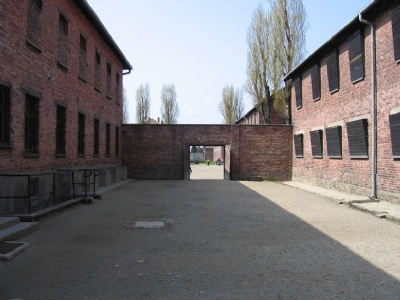
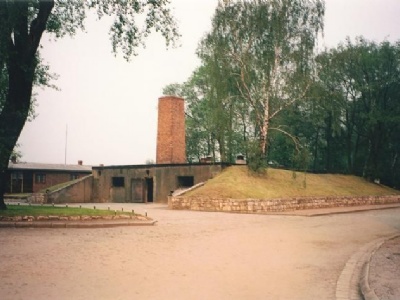















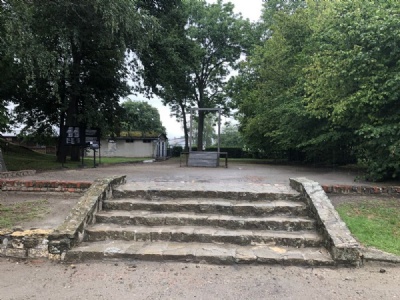

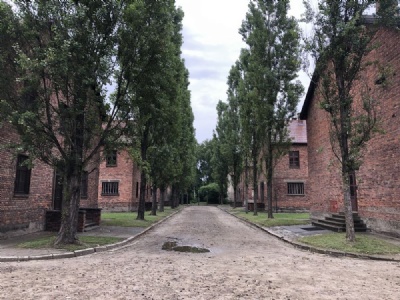


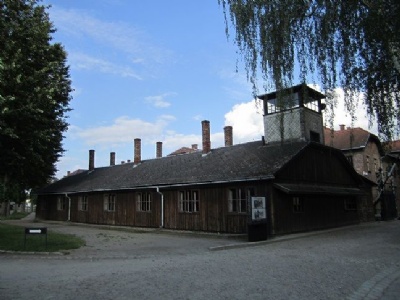






Auschwitz has symbolized the ultimate product of what Nazism was capable of and is the only concentration camp on UNESCO’s list of Historical World Heritage Sites. Auschwitz is a emotive phenomenon that raises both disgust and fear what a state can achieve when its social functions and citizens are subordinated to a racist party, and what man is capable of if the right (or wrong) circumstances are created. But Auschwitz also arouses a curiosity about seeing the place where evil has been personified. In 2019 (last year before the pandemic), Auschwitz was visited by about 2,3 million visitors. If this trend continues, the number of visitors will increase in the coming years after the pandemic. This has led the museum not to allowing more than 200 visitors per hour to Auschwitz I – Stammlager and only with a pre-booked guide tour and not individually. Therefore, visitors should book a ticket in advance if they want to be sure to get in at a certain time. At Auschwitz II – Birkenau there are also requirements for tickets, but their you can (still) visit individually and not only with a pre-booked guide.
Auschwitz I – Stammlager has also introduced security controls where the visitor now has to pass a metal detector to enter. Bags must also not be brought in and sweaters, jackets or t-shirts with motifs that has resemblances of a skull is prohibited. The association to the SS skull is considered too striking and may offend some visitors. In order to enter the museum, the visitor must either put on a jacket or a sweater, turn it inside out to cover it. Due to these security checks, the visitor is asked to arrive at least 30 minutes before the booked time. The number of security guards inside the museum has also increased significantly and the visitor is usually under surveillance. In Birkenau, it is not uncommon for the guards to move on segways. This is a development that is worrying and risks shifting the focus from what is really the purpose of Auschwitz, to take part of the history of the camp.
Since 2023, the congestion in Auschwitz in – Stammlager is significantly less in comparison what it used to be. This means that the congestion that previously existed is now almost a memory. Nowadays there is time for reflection and reflection which was not previously possible. This is a development that is well worth preserving. In Auschwitz II – Birkenau it is even calmer and no major crowds to speak of. But despite this, the large number of visitors has led to Auschwitz historic buildings being worn down and can thus be lost. The historic buildings are not renewable and must be renovated with as little new material as possible, otherwise it will be a reconstruction of the history. At the same time the museum is aware of the need of renovation if Auschwitz is gonna be preserved for future generations. A super sensitive balancing act because the museum wants as many people as possible to have the opportunity to visit without the camp being destroyed or lost. Inevitably, this has led to some historical ruins and buildings no longer being accessible to visitors to the same extent as before, including the Birkenau main tower is now closed for individual visitors. In short, the large number of visitors also requires greater maintenance and with this comes increased financial costs for an already strained economy.
What would be good for Auschwitz’s well-being would be to demystify Auschwitz. There is a mystery about Auschwitz that is kept alive through museums, monuments, stories, books, movies and not least social media. Auschwitz was unique but so were other camps, you do not learn more about Nazism just because you visit Auschwitz. It is perfectly possible to learn about Nazism by studying other camps and places, both on site and in books. A story about the Holocaust that is not about Auschwitz has the same value but not at all the same attraction as a story about Auschwitz. Who wants to hear or read about a person who were imprisoned in Amersfoort, Esterwegen, Poniatowa, Falstad, Rivesaltes, Eckerwald, Laura, Kaiserwald, Vaivara, Riga’s ghetto, Klooga or Ebensee? Only if they end up in Auschwitz. It’s Auschwitz we want to hear about, it’s Auschwitz we’ve read about, it’s Auschwitz we’ve seen in films and in pictures, Anne Frank was a prisoner in Auschwitz, it was in Auschwitz that Mengele experimented, it was in Auschwitz that the trains went all the way to the gas chambers, Auschwitz had the largest gas chambers, the largest crematoriums, had most barbed wire, this is where most people were murdered and it was here that Schindler’s List took place. Auschwitz was simply the biggest and the worst and thus superior everything else.
The feeling is that Auschwitz balances between on one hand being an interesting and important museum and on the other hand a tourist attraction. History has to compete with social media where a selfie is more important than the historical events that took place in Auschwitz. But Auschwitz is not a tourist attraction, it is a fantastically interesting museum that deserves its place as the symbol of Nazism’s crimes against humanity. But let us not forget either that Auschwitz was not the only place where people suffered and died on the same premises as in Auschwitz. Therefore, it is important to highlight other camps (and ghettos) and those who sat there and give them as much historical significance and attention as Auschwitz and its prisoners. They deserve it and then the burden on Auschwitz would become less and that is something that we and future generations would benefit from.